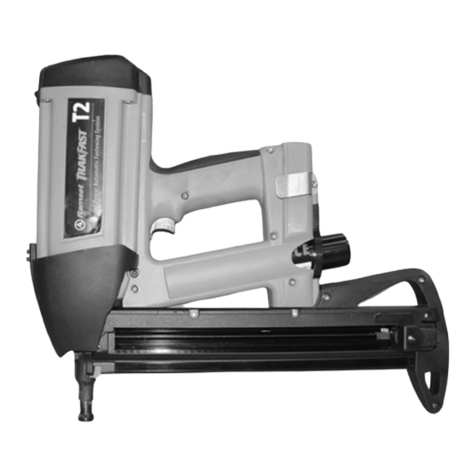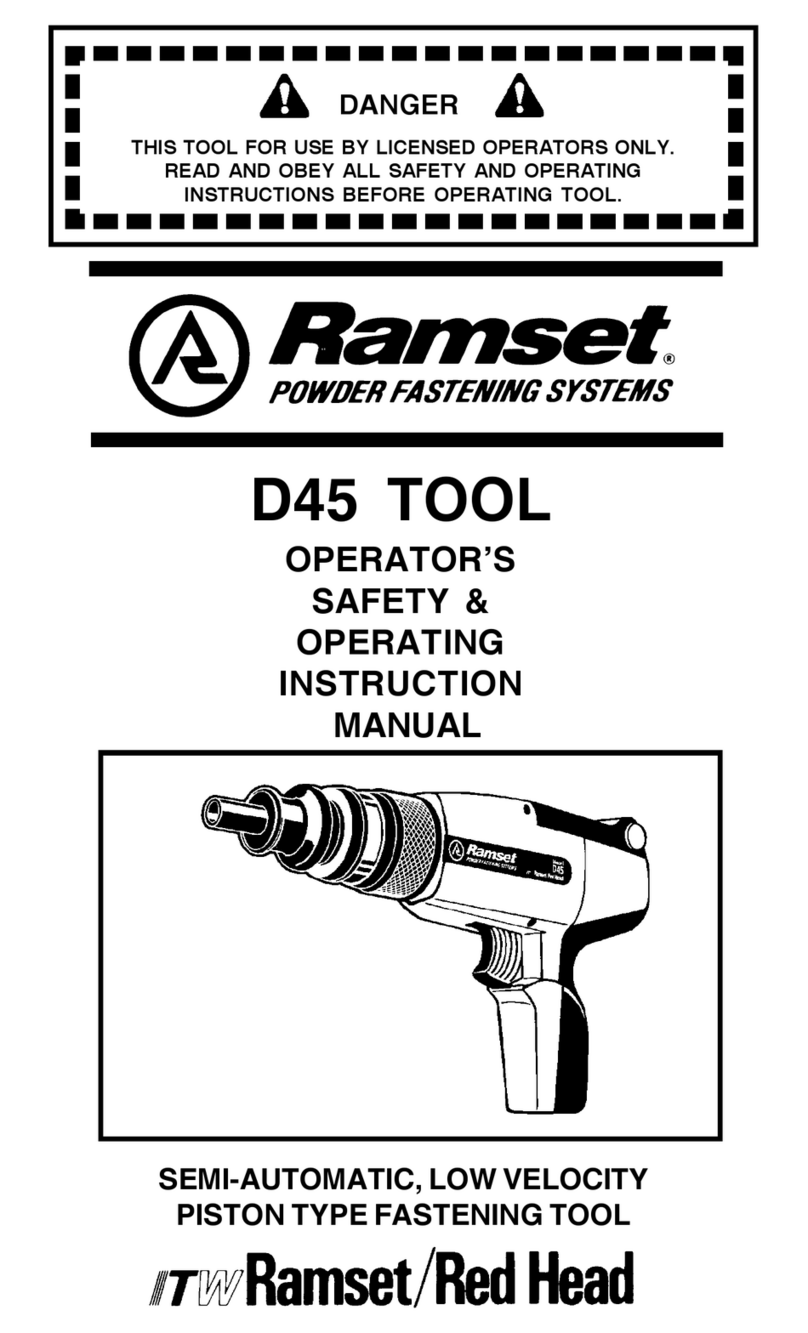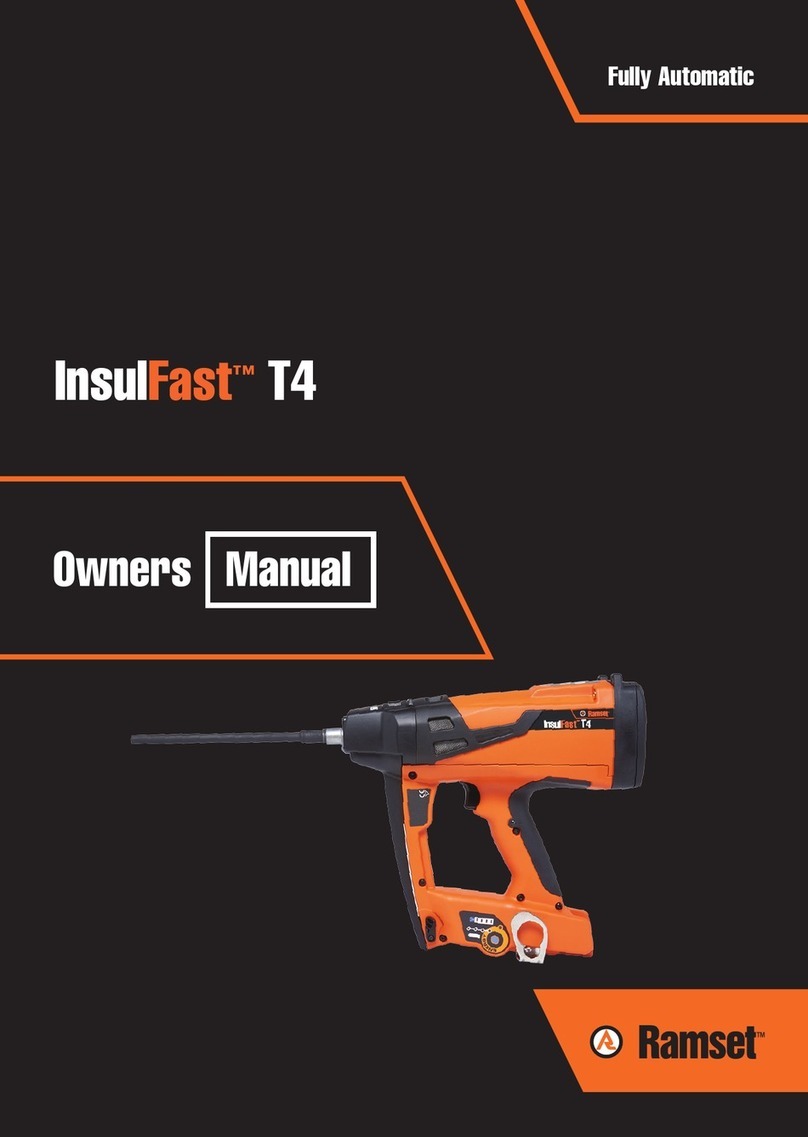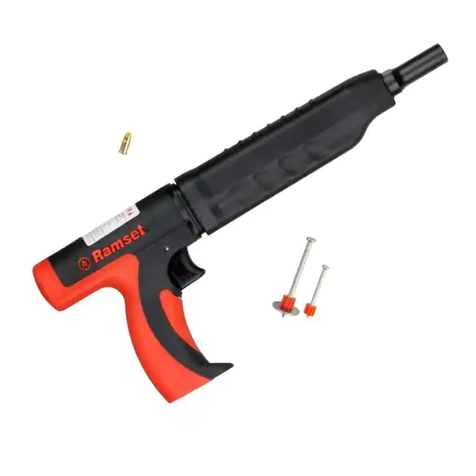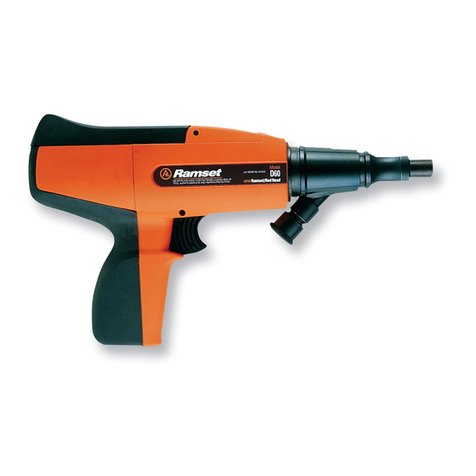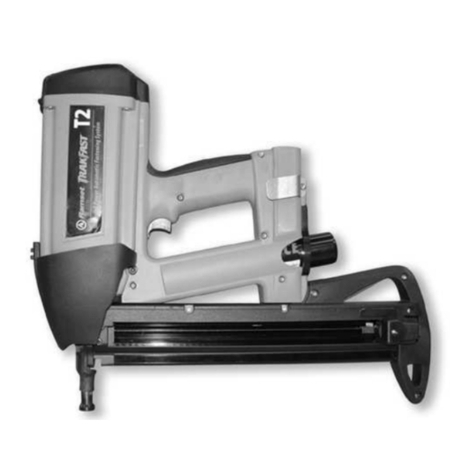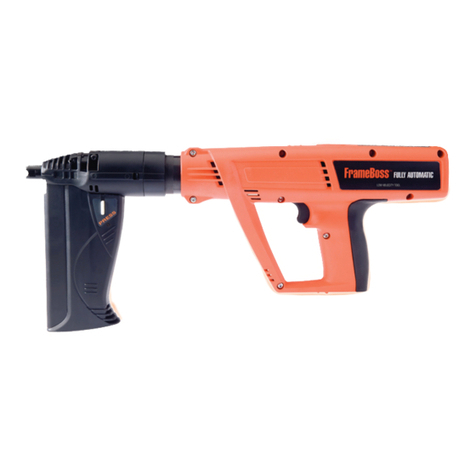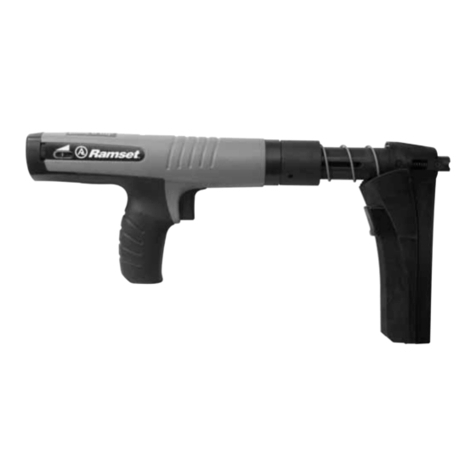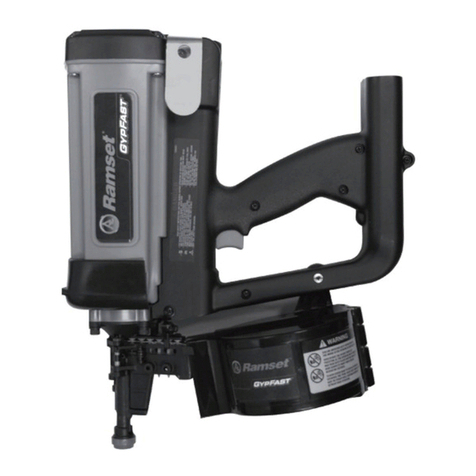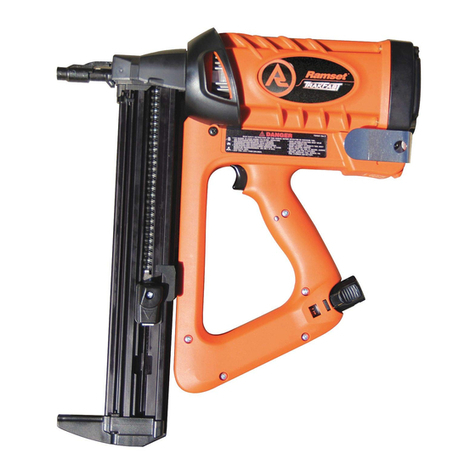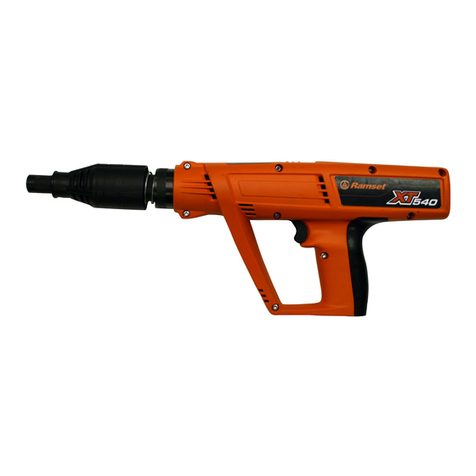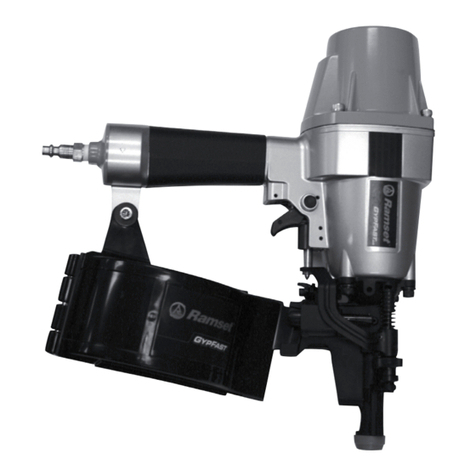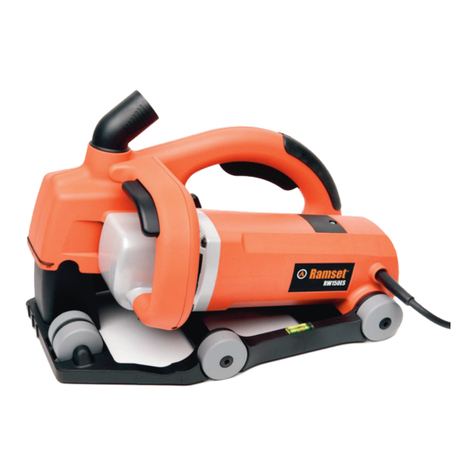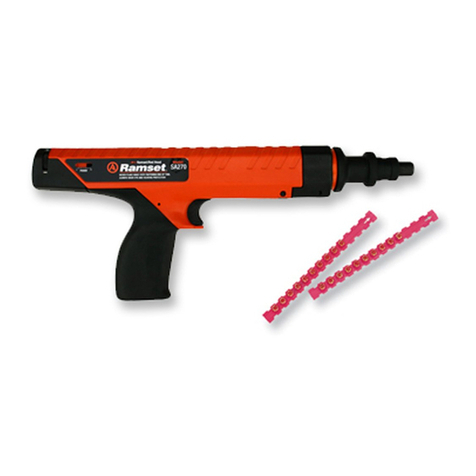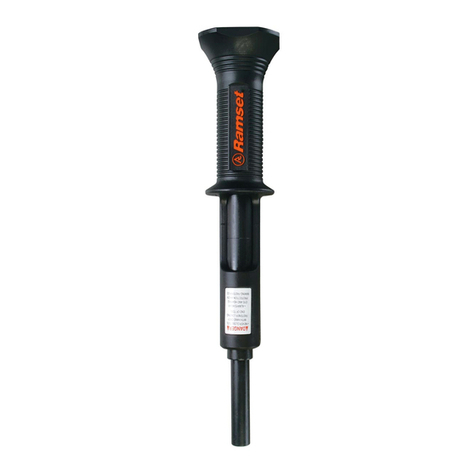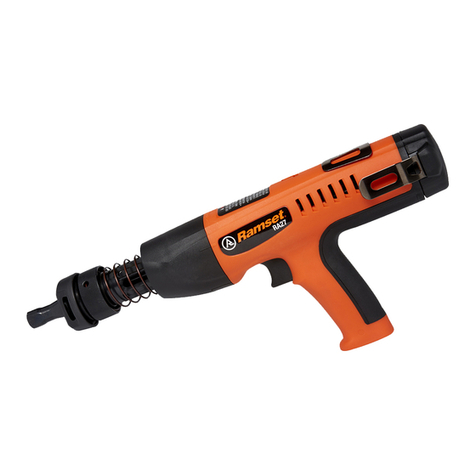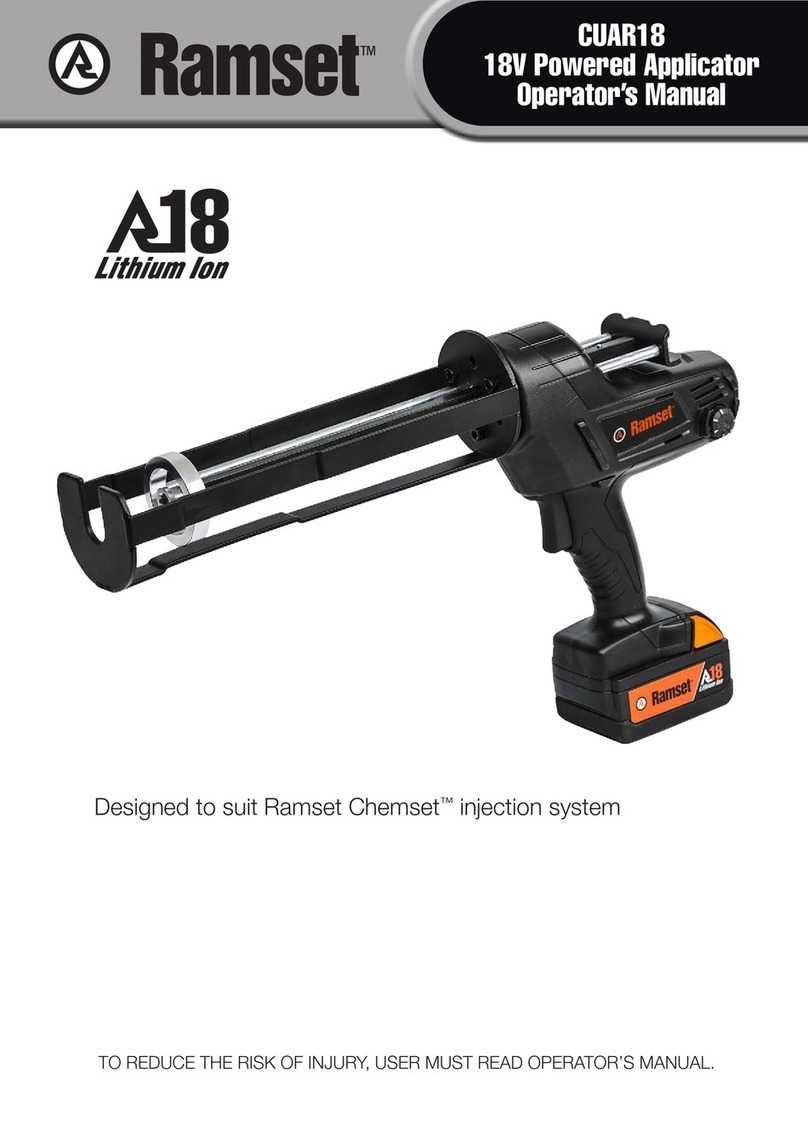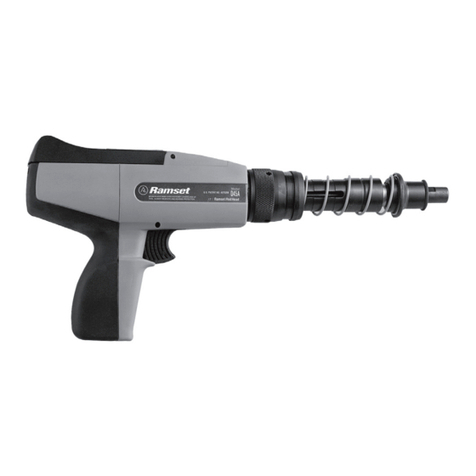
3
1. NEVER attempt to use your Ramset PA
tool UNLESS you have satisfactorily
completed authorised training and read
this instruction manual.
2. When not in use, the PA Tool should be placed,
unloaded in its box or case, which should
then be shut, locked and stored in a safe place
to which only authorised persons have access.
3. ALWAYS follow the directions for care of
the tool contained in this book. Special
adaptors shall be fitted and used strictly in
accordance with the instructions and in a
manner such that the safety features of the
tool are not adversely affected.
4. ALWAYS display a suitable Authorized Warning
Notice in such a manner as to be clearly
visible to all persons who are at, or near, the
place where a tool is being used. Such notice
shall be in accordance with local Government
Regulations.
5. NEVER fire the tool UNLESS you and any
other people in the area are wearing safety
eye and hearing protection.
6. NEVER let bystanders gather around when
you are using a PA tool.
7. NEVER use a powder-actuated tool in the
presence of any explosive or inflammable gas,
dust or vapour, in an atmosphere which is
compressed, or in any place where the power
load may be unintentionally exploded or be
rendered dangerous by the presence of heat.
8. NEVER leave a tool unattended in a place
where it would be available to unauthorised
persons.
9. NEVER load the tool until ready to
fasten. The tool should not be loaded until
immediately prior to its use. If it has been
loaded but not put into immediate operation,
it should be unloaded and not laid down or
carried around in the loaded condition. Never
load the tool at other than the place at which
it is to be used, thus minimising risk of
unintentional firing.
10.NEVER carry fasteners or other metal
objects in the same pocket or package as
power loads.
11.ALWAYS check that the barrel is free from
obstructions before loading.
12.NEVER point the barrel of a loaded or
unloaded tool towards any person. ALWAYS
point the tool downwards and as far as
practical away from the operators body. This
applies in particular where a power load that
has misfired is being removed.
13.NEVER place your hand over the muzzle with
a power load in the tool.
14.Fasteners should not be driven into
brick, concrete, or similar substances if;
(i) nearer than 75mm to an edge or
(ii)the thickness of which is less than
100mm, or less than three times the shank
penetration into the basic material, whichever is
the lesser or
(iii) nearer than 150mm to where a former
fastener has failed.
15.Fasteners should not be driven into
steel if;
(i) less than 4mm thick, unless, for
fastening into thinner steel, the shank diameter
of the fastener is less than the thickness of the
steel or
(ii)nearer than 12mm to an edge or hole.
16.NEVER fasten into wood, fibreboard, plaster
or other soft materials unless backed up
by a material that will prevent the fastener
from passing completely through. (Masonry or
Thick Steel).
17.NEVER fire fasteners into brittle or hard
materials such as glazed brick or
tile,terracotta, marble, granite, slate, glass or
into hard steel. Do not attempt to fasten into
high tensile steel, cast iron, heat treated steel
or pressurised vessels such as gas bottles,
compressed air cylinders etc.
18.NEVER attempt to fasten into a spalled area in
masonry where a previous fastener has failed.
19.Fasteners shall not be driven through
existing holes unless the tool is specifically
equipped by Ramset for accurate alignment of
the barrel.
20.DO NOT fire into material which dulls the
point of a test fastener, when first tried by
hand as a centre punch.
21.ALWAYS position your body comfortably in
Safety Precautions
➡
